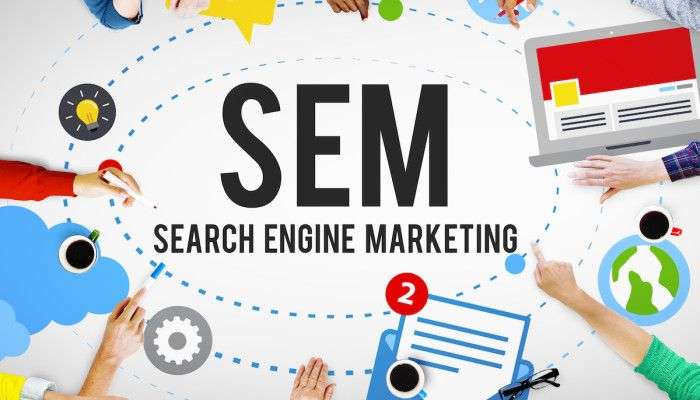
Search Engine Marketing (SEM)
Search Engine Marketing (SEM) is a dynamic digital marketing strategy that empowers businesses to secure immediate visibility on search engine results pages (SERPs) using paid advertising. While SEO builds organic momentum over time, SEM achieves rapid impact by placing targeted ads through platforms like Google Ads and Bing Ads.
Foundation of SEM: How It Operates
- At its core, SEM operates within real-time auctions. Advertisers bid for keywords relevant to their products or services, but it’s not just about raw bid amounts. Search engines evaluate Quality Score—a measure of ad relevance, expected click-through rate (CTR), and landing page experience—to determine placement and cost. High-quality ads can outperform those with higher bids and achieve better ad rankings at a lower cost.
The typical SEM cycle includes: - Keyword Research: Identifying high-intent phrases—broad and long-tail—that match user search behavior.
- Creating Targeted Ads: Crafting compelling ad copy with clear messaging and including strategic ad extensions like sitelinks, reviews, or image assets.
- Landing Page Alignment: Ensuring that the landing page delivers on ad promises, offers fast loading, and steers users toward conversion.
- Auction & Delivery: Keywords go through auctions and ad placement is determined by bid and quality score in real-time.
- Performance Tracking: Monitoring impressions, clicks, CTR, conversions, and cost-per-click to optimize campaign results.
What Makes SEM Valuable
- Instant Visibility: Unlike SEO, SEM launches results immediately, making it ideal for time-sensitive campaigns, launches, or feedback loops.
- Audience Precision: SEM allows for granular targeting—by geography, device, time, and search intent—ensuring ads reach users when they’re ready to act.
- Measurable ROI: Marketers get real-time access to performance data—CTR, conversions, ROI—making campaign refinement data-driven and efficient.
- Budget Control: With PPC models, you pay only for actual engagement. Budgets can be scaled, paused, or redirected dynamically.
- Competitive Edge: In saturated markets, effective SEM strategies give brands an opportunity to outbid or outperform competitors, even in top ad spots.
Challenges and Evolving Landscape (2025 Onward)
While SEM remains powerful, emerging trends are reshaping how it must be approached:
- AI, Answer Generation & Zero-Click Search
AI-driven search engines and “answer engines” like ChatGPT, Perplexity, and Google’s AI Overviews provide direct answers on the SERP—often reducing user clicks to advertiser sites. - This shift demands that brands optimize not only for clicks but for visibility within AI-generated results through AEO (Answer Engine Optimization) and GEO (Generative Engine Optimization)—structuring content in Q&A formats, using schema, and delivering concise, authoritative responses likely to be surfaced by AI engines.
- Declining Clicks and Ecosystem Strain
As more queries get resolved without leaving the search page, site traffic and ad clicks are dropping—raising concerns over the long-term sustainability of web referral models. Cloudflare and others are calling for new frameworks to compensate content creators.
Strategic Playbook for 2025 SEM
- Blend Traditional SEM with AI-Optimized Tactics: Continue running PPC campaigns, but also craft content that’s structured for voice, AI overviews, and answer engine inclusion.
- Prioritize Ad Quality: Refine Quality Score by aligning ad copy and landing pages with user intent and experience.
- Optimize for Zero-Click Visibility: Use structured data, concise FAQs, and authoritative content to appear in AI result summaries.
- Diversify Beyond Search Ads: Explore alternative discovery platforms (social, voice apps, niche ecosystems) to counter declining click-through rates.
- Focus on Authenticity: Human-generated content remains a trusted resource. Emphasize brand voice, original value, and user-centric messaging.
- Legal and Ethical Compliance: Stay updated on advertising regulations, maintain transparency, and respect privacy norms.
Final Takeaway
SEM remains a critical tool for driving immediate, targeted traffic. But as search user behavior shifts toward AI interfaces and answer summaries, marketers must evolve. Blending PPC precision with AI-aware content design, authentic value messaging, and adaptable strategies ensures SEM remains effective and future-forward in 2025 and beyond.
THIS BLOG IS WRITTEN BY
